Do you love practicing tricks and stunts on your BMX bike? If so, then you understand the importance of having reliable equipment to execute those jaw-dropping moves. One crucial part of any BMX bike is the handlebars, also known as “BMX bars.” These bars not only offer stability and control but also elevate your riding experience.
But let’s address the important question: how durable are BMX bars? Whether you’re a seasoned rider or new to this exciting sport, knowing the lifespan of your BMX bars is crucial for performance and safety. In this article, we’ll explore the factors that impact their longevity, signs of wear and tear to watch out for, tips to extend their lifespan, and more. So put on your helmet as we delve into uncovering the true lifespan of BMX bars.
Understanding the Lifespan of BMX Bars
Durability is a key consideration when choosing BMX bars. Riders need bars that can withstand the constant demands of tricks, jumps, and rough landings. So, how long can you expect BMX bars to last? In this article, we’ll explore the factors that impact their lifespan, discuss the various types of bars on the market, and provide tips for maximizing their longevity.

I. Types of BMX Bars
Understanding the durability of BMX bars requires knowledge about the different types available. There are two main designs: cross bars and piece bars. These designs have distinct geometries that impact their strength and lifespan. Cross bars feature a single tube running from end to end, providing exceptional strength. On the other hand, piece bars consist of multiple separate tubes, which may slightly reduce their longevity.
II. Material and Construction
The durability of BMX bars depends on the material and construction used. Bars made from low-quality chromoly or Hi-Ten steel are more likely to bend or break, leading to a shorter lifespan. On the other hand, high-quality bars like Odyssey’s Lumberjack XL bar or Shadow Conspiracy Crow Bar are built with multi-butted 41-thermal heat-treated chromoly, ensuring strength, lightness, and durability. These bars can withstand intense riding conditions and last longer.
III. Heat Treatment and Welding
The lifespan of BMX bars is also affected by heat treatment and welding techniques. When bars undergo post-weld heat-treatment, they become more reliable and durable. This process strengthens the weld area and reduces the risk of cracks or failures. For example, Odyssey’s Lumberjack XL and Shadow Conspiracy Crow Bar are both subjected to this heat-treatment process, resulting in increased durability and a longer lifespan.
IV. Frequency and Intensity of Riding
The lifespan of BMX bars is also affected by how often and how intensely riders use them. Those who frequently perform high-impact tricks and jumps will naturally place more strain on their bars, possibly reducing their lifespan. Conversely, riders who adopt a more cautious riding style or are lighter in weight may find that their bars last longer.
V. Proper Maintenance and Care
Proper maintenance and care are essential to maximize the lifespan of BMX bars. It is crucial to regularly inspect the bars for any signs of damage, such as cracks or dents. Additionally, keeping the handlebars clean and protecting them from excessive moisture plays a key role in prolonging their durability.
The durability of BMX handlebars is influenced by their dimensions. Longer handlebars distribute force more evenly across different areas compared to shorter ones. Furthermore, thicker tubing adds extra strength against bending forces.
To extend your BMX bar’s lifespan even further:
1) Avoid landing hard on rough surfaces.
2) Use handlebar pads for added protection.
3) Don’t overload your bike with unnecessary weight.
4) Store your bike indoors away from moisture whenever possible.
Different Types of BMX Bars
When it comes to choosing BMX bars, there are several types to consider, each with its own set of characteristics and benefits. Understanding these variations is important in order to make an informed decision about which bar is best suited for your BMX bike. In this guide, we will explore the most common types of BMX bars and their distinct features.
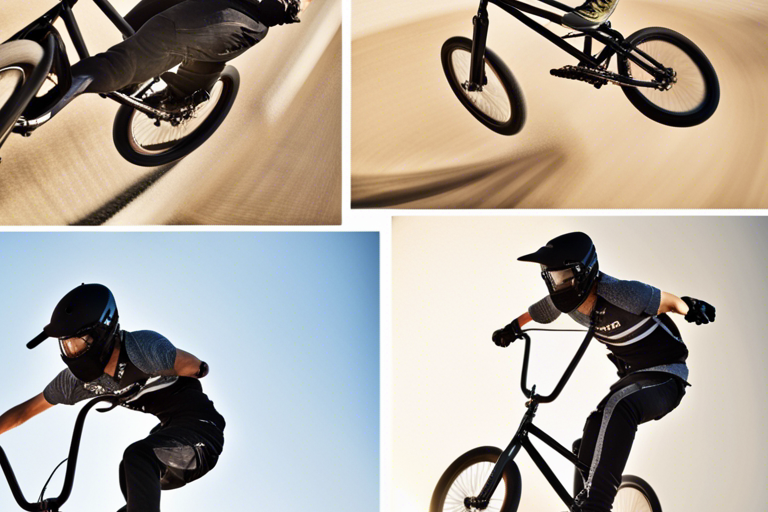
1. Cross Bar:
It offers additional strength and stability, creating a solid and secure experience for riders who prioritize these qualities.
2. Piece Bar:
One advantage of these bikes is their flexibility in customization. Riders have the option to select different tube angles and lengths based on their personal preferences.
Piece bars are popular among riders who prioritize a comfortable and relaxed ride experience. They offer a more laid-back feel compared to other types of handlebars.
3. Chromoly vs. Hi-Ten Steel:
Chromoly is a higher-quality material that offers superior strength and durability. It is lighter and more responsive than hi-ten steel.
Hi-ten steel bars are typically found on lower-end or more affordable BMX bikes. They may not be as durable or lightweight as chromoly bars.
4. Geometry and Tube Thickness:
There are different variations of BMX bars available, each with its own geometry and tube thickness. These factors can have an impact on how the bike handles and feels while riding.
Different bars have varying degrees of upsweep (angled backward from the center) and backsweep (curved toward the rider). These differences accommodate various riding styles and individual preferences.
Using thinner tubing in a bar can enhance its responsiveness, although it may compromise durability when compared to thicker tubing alternatives.
When selecting a BMX handlebar, it’s crucial to take into account your personal riding style, preferences, and budget. Trying out various types and finding the perfect combination for your specific needs can significantly improve your overall riding experience.
Factors Affecting the Longevity of BMX Bars
Several factors contribute to the lifespan of a BMX bar. The primary factor is the quality of materials used in its construction. Bars made from high-quality, durable materials like chromoly steel or aluminum alloy are more likely to withstand wear and tear over time.
The way in which the bars are utilized and subjected to abuse during riding sessions is another crucial factor. Frequent jumps, tricks, and heavy impacts can exert considerable stress on the bars, which may diminish their longevity. It is imperative to employ proper technique when executing tricks and refrain from applying excessive force that could potentially harm the bars.
Taking good care of BMX bars is essential for their durability. It’s important to regularly check for any signs of damage or weakening, like cracks or bends, to catch potential issues early on. Furthermore, keeping the bars clean and dry after each ride can help prevent rust or corrosion.
The weight of the rider is also an important factor to consider when discussing the longevity of handlebars. Heavier riders may exert more strain on the handlebars compared to lighter riders, potentially causing faster wear and even potential failure.
The durability of BMX bars can be influenced by external factors such as environmental conditions. When exposed to moisture, extreme temperatures, or harsh chemicals, the materials used in BMX bars may weaken over time.

To ensure your BMX bars last as long as possible:
– Invest in high-quality bars made from durable materials.
– Use proper riding techniques with controlled force.
– Regularly inspect for signs of damage.
– Keep your bars clean and dry after each ride.
– Consider your weight when selecting handlebars.
– Protect them from extreme weather conditions or harmful substances.
To ensure you get the most out of your BMX bars and have safe rides, it’s important to take into account these factors and follow proper maintenance practices. This will help maximize their lifespan.
Signs of Wear and Tear on BMX Bars
BMX bars are a crucial component of a bike, offering riders control and stability. Unfortunately, over time, these bars can undergo wear and tear, impacting both performance and safety. It’s essential for riders to recognize the signs that indicate when replacement of their BMX bars is necessary.
BMX bars are essential for a smooth and safe riding experience. However, over time they can start to show signs of wear and tear. Here are some indicators to watch out for:
Bends or Cracks:
Regularly inspect your bars for any bends or cracks, as these can occur from heavy impacts or crashes. Even a small bend or hairline crack can weaken the structural integrity of your bars and increase the risk of failure.
Rust:
When your bars are exposed to moisture and the elements, it can lead to rust formation on the surface. While superficial rust might not be a big issue, deeper corrosion can actually weaken the metal, increasing the risk of breakage. Look out for any areas where there is flaking or bubbling paint, as these could indicate underlying rust problems.
Loose Grips or Ends:
If you notice that your grips or bar ends are starting to feel loose, it may be a sign of wear on the handlebar itself. It’s important to address this issue because a loose grip can impact your control and overall strength while riding, which can compromise your overall experience. Make sure to secure the grips and bar ends tightly, and if needed, consider replacing them for optimal safety and performance.
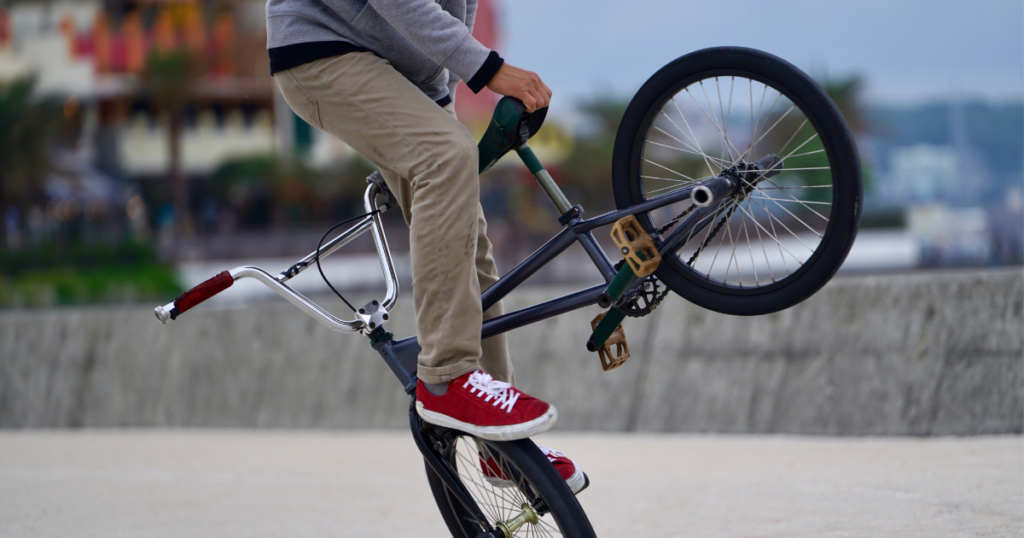
Excessive Flex:
BMX bars are built to provide a rigid and responsive riding experience. If you notice your bars flexing or twisting excessively while riding, it could be a sign of weakened structural integrity. This weakening can be caused by metal fatigue or existing damage to the bars.
Unwanted Movement:
While riding, it’s important to be vigilant for any unusual movement or creaking sounds coming from your bike’s handlebars. These could indicate internal damage or loose bolts. To prevent potential issues, make sure to regularly tighten all the bolts on your bike.
BMX Bar Dimensions and Specifications
To ensure a smooth and comfortable ride on your BMX bike, it’s essential to have a good understanding of the dimensions and specifications of BMX bars. Generally, the length of BMX bars falls within the range of 28 to 30 inches, although personal preferences may vary leading to some variations. If you prefer performing tricks, shorter bars can offer better control. On the other hand, if you enjoy high-speed rides, longer bars provide added stability for those occasions.
An additional factor to take into account is the increase in popularity of BMX handlebars. The term “rise” refers to the height of the handlebars from their attachment point on the stem. Popular rise measurements include 8, 9, or even 10 inches. The decision on which measurement to choose depends on your personal riding style and level of comfort.
The width of BMX bars is an important factor in determining your comfort while riding. Generally, handlebars range from about 27 to 29 inches wide. Wider bars offer improved stability for jumps and landings.
The type of material used to manufacture BMX bars is important for both weight and durability. Many riders prefer chromoly steel because it offers a strong and lightweight option that can withstand the heavy impacts often experienced in freestyle riding.
When buying new handlebars for your bike, it’s important to ensure compatibility with your bike frame. One way to do this is by checking the specific clamp diameters before making a purchase.
Finding the perfect dimensions and specifications for your BMX bar can greatly enhance your performance on two wheels. Take some time to experiment with different sizes until you find the ones that suit your riding style the best. Happy biking!
Maintenance Tips for Extending the Lifespan of BMX Bars
The BMX bars play a vital role in the performance and safety of a freestyle BMX bike. It is important to maintain their longevity for an optimal riding experience. The lifespan of BMX bars can vary based on factors like usage, manufacturing quality, and maintenance. To ensure a longer lifespan and an enjoyable ride, here are some key maintenance tips to keep in mind.
1. Regular Inspection and Cleaning:
To ensure the safety and longevity of your BMX bars, it’s important to regularly check for any signs of damage. This includes inspecting for cracks, dents, or bends. Taking the time to thoroughly examine your bars before and after each ride is crucial in identifying potential issues early on. Additionally, keeping your bars clean by removing dirt, grime, and corrosive substances will help prevent premature wear and tear.
2. Avoid Excessive Impact:
While BMX bars are built to withstand the demands of freestyle riding, it’s still possible for them to sustain damage from excessive impact. To help preserve the longevity of your handlebars, it’s important to avoid landing too forcefully on them, as this can result in bending or snapping. When riding, make an effort to distribute your weight evenly across the bars. This will help reduce the strain placed on them and promote durability.
3. Maintain Proper Torque:
To prevent any issues, make sure that your BMX bars are securely fastened. Loose bars can shift and rotate while riding, causing instability and potential damage. Conversely, over-tightening the bars can result in stress fractures. Follow the recommended torque specifications provided by your bike manufacturer to ensure proper tightening of your specific BMX bars.
4. Use Bar End Caps:
Bar end caps are crucial accessories that serve multiple purposes for your BMX bars. They provide protection against injuries caused by sharp edges, while also acting as barriers to prevent dirt, moisture, and other unwanted debris from entering the handlebars. These affordable and easy-to-install end caps are a smart investment that can extend the lifespan of your BMX bars.
5. Store Properly:
To ensure the longevity of your BMX bars, proper storage is key. When you’re not using your bike, it’s important to store it in a dry and climate-controlled environment to prevent rust and corrosion. Consider investing in a bike storage rack or wall mount to keep your BMX bars and other components elevated off the ground, minimizing the risk of accidental damage.
The Role of BMX Bar Maintenance in Safety
To ensure the safety and durability of your BMX bars, proper maintenance is crucial. Regular upkeep not only prolongs their lifespan but also improves their performance on the track or at the skate park.
Maintaining clean bars is crucial for their optimal performance. Over time, dirt, sweat, and grime can build up on the surface of your bars, causing them to become slippery and affecting your grip. To prevent this, it’s important to regularly wipe down your bars with a damp cloth. This simple practice will remove any debris and ensure a secure grip while performing tricks and jumps.
Another important aspect of ensuring safety is regularly inspecting your BMX bars for any signs of damage or wear. It is crucial to check for cracks, dents, or bends that could weaken the structure of the bars. If you observe any issues, it’s highly recommended to replace them immediately to prevent potential accidents.
Regular maintenance of the bar includes an essential step: tightening loose bolts or screws. The vibrations from riding can cause these fasteners to gradually loosen over time. It is crucial to periodically check and tighten them to prevent any unexpected failures while performing tricks or maneuvers.
Keeping the moving parts, like the stem clamp area, properly lubricated is another important step in maintaining safe BMX bars. Using bike-specific lubricants helps reduce friction between components, preventing them from wearing out prematurely and ensuring smooth operation.
Proper storage is also important for maintaining BMX bars. Storing your bike indoors or in a dry environment helps protect it from rust caused by moisture exposure. It’s also a good idea to keep your handlebars covered when they’re not in use to prevent accidental scratches or damage.
To ensure the safety and longevity of bmx bars, it is important to prioritize regular cleaning, inspections, tightening bolts and screws if necessary, lubrication in appropriate areas, and proper storage practices. These steps are vital for maximizing both safety and the lifespan of your bmx bars.
The Average Lifespan of BMX Bars
For BMX riders, it’s natural to have questions about how long their BMX bars will last. Knowing the lifespan of your bars is crucial for both safety and performance. Several factors come into play when determining the longevity of your bars, including construction materials, usage patterns, riding style, and maintenance practices.

1. Construction Materials:
BMX bars are commonly constructed from materials such as chromoly and hi-ten steel. Chromoly is a preferred option because of its excellent strength-to-weight ratio, which enhances resistance to bending and snapping. On the other hand, hi-ten steel, while more affordable, tends to be heavier and less durable. Choosing BMX bars made from high-quality chromoly will typically ensure a longer lifespan for the bars.
2. Quality of Construction:
The manufacturing process of bars also plays a role in their durability. Bars that undergo post-weld heat treatment, like the Odyssey Lumberjack XL Bar, are known for their increased strength and resilience. Additionally, bars constructed with multi-butted, 41-thermal heat-treated chromoly offer extra reinforcement, making them more resistant to impact and fatigue.
3. Riding Style and Frequency:
The lifespan of your BMX bars can be influenced by your riding style and frequency. If you are an aggressive rider who frequently engages in technical tricks and big jumps, your bars may experience increased stress and strain, which could shorten their lifespan. Conversely, riders who prefer a more relaxed approach or stick to mellow riding may enjoy a longer lifespan for their bars.
4. Proper Maintenance:
By regularly maintaining your bars, you can greatly extend their lifespan. This involves regular cleaning, thorough inspections for signs of damage or wear, and tightening any loose bolts. By keeping your bars in excellent condition, you can prevent potential issues and ensure they last as long as possible.
According to Brant Moore, a rider who shares his perspective on the matter, BMX bars can have a lifespan ranging from a few months to several years. This depends on factors like usage and maintenance. It’s worth mentioning that even with proper care, handlebars will inevitably wear out over time due to the continuous stress they experience while riding.
Common Tricks and Techniques That Can Impact BMX Bar Lifespan
BMX bars play a vital role in BMX bikes. They offer riders the control and stability needed to perform stunts and tricks. Taking care of your BMX bar and using proper riding techniques can significantly extend its lifespan. In this section, we’ll discuss some common tricks and techniques that can affect the durability of your BMX bar.
1. Avoid excessive force on your BMX bar:
When using BMX bars, it’s crucial to remember that they are built with a specific level of durability. However, consistently subjecting them to excessive force, like harsh landings after jumps, can gradually weaken their structural integrity.
2. Regularly inspect for cracks or signs of wear:
When riding, it’s important to regularly check your BMX handlebars for any signs of cracks, dents or wear. Catching these issues early can help prevent further damage and potential failure.
Take a careful look at areas where the bar may have taken more of an impact, particularly where it connects to the stem or close to the grips.
3. Properly tighten your BMX bar:
Properly securing your BMX handlebar is vital for optimal performance and durability. Loose bars can result in excess bending and potential damage or breakage over time.
Regularly check that your BMX bar is tightened according to the manufacturer’s recommended torque specifications. If needed, use a torque wrench to ensure proper tightening without overtightening.
4. Avoid excessive exposure to moisture:
Moisture can significantly reduce the lifespan of your BMX bar by accelerating the corrosion process. Continuous exposure to rain, wet surfaces, or excessive sweat can lead to premature rusting.
To maintain your BMX bike and its components, it is recommended to keep them dry whenever possible. After riding in damp conditions, be sure to wipe down the handlebars.
5. Choose the right BMX bar for your riding style:
Choosing the appropriate BMX handlebar that aligns with your riding style and personal preferences can greatly affect its durability. Each bar has unique strengths and geometries, making it essential to find the perfect match for your specific requirements.
If you frequently perform high-impact tricks, it’s worth considering investing in BMX bars made from higher quality materials.
Best Practices for Properly Discarding Old BMX Bars
Eventually, your BMX bars will reach the end of their useful lifespan. Whether you’ve upgraded to a new set or your current bars have taken one too many falls, it’s important to know how to properly dispose of them.
A recommended approach to getting rid of old BMX handlebars is recycling. Numerous communities have metal recycling programs that accept scrap metal, including handlebars. By utilizing these programs, you can guarantee that your old bars are recycled and repurposed rather than being discarded in a landfill.
If your old BMX bars still have some life in them and could be beneficial to someone else, why not donate them? Local bike shops or organizations that refurbish bikes for those in need would greatly appreciate the contribution. Plus, by giving away quality parts at an affordable price, you never know who might benefit from having access to them.
If recycling or donating the BMX bars is not an option, it’s important to responsibly dispose of them by following proper waste management guidelines in your area. This may include reaching out to your local waste management facility or consulting community resources for specific instructions on how to safely discard metal parts like handlebars.
When it’s time to part ways with your old BMX bars, practicing responsible disposal methods not only helps reduce waste and minimize environmental impact but also positively contributes to the cycling community. So, when bidding farewell to your faithful set of handlebars, keep these best practices in mind and do right by both the environment and fellow riders.

How to Extend the Life of Your BMX Bars
1. Regular Cleaning:
To make your BMX bars last longer, it’s important to regularly clean them. Simply use a mild soap and water solution to remove any dirt, grime, or debris that may have built up from your rides.
2. Avoid Excessive Impact:
Although it’s impossible to completely avoid impacts while riding your BMX bike, it’s important to minimize excessive impact. Landing harshly on jumps or attempting tricks beyond your skill level can put unnecessary stress on your bars, resulting in premature wear and tear.
3. Proper Storage:
When your bike is not in use, it’s important to store it in a secure and dry location. Moisture can lead to rust and corrosion, which can gradually weaken the strength of your BMX bars.
4. Check for Loose Bolts:
Before riding, take a few moments to inspect the bolts on your BMX bars for any signs of looseness. If you notice any, tighten them as loose bolts can put extra stress on the bars.
5. Replace Grips Regularly:
Grips serve a crucial purpose when riding, providing both comfort and control. They also shield the ends of your handlebars from harm during crashes or accidental drops. To avoid additional damage, it’s important to replace worn-out grips promptly.
6. Don’t Overload Your Handlebars:
To prevent damage to your handlebars, it’s important to avoid placing heavy loads on top of or hanging from them. This can cause excessive pressure and potentially lead to bending or snapping.
How Long Do BMX Bars Last?
BMX bars are a crucial part of any BMX bike as they offer stability and control during tricks and stunts. Like other bike components, BMX bars do have a limited lifespan. So, the question arises: how long can you expect your BMX bars to last?
The lifespan of BMX bars can vary based on several factors, including the type of material used, how often they are used, the riding style of the rider, and maintenance practices. Typically, high-quality BMX bars constructed from tough materials such as chromoly steel or aluminum can endure for multiple years when properly cared for.
However, individuals who ride BMX bikes aggressively or frequently put extra strain on their BMX bars. Tricks that involve excessive force or impact can cause faster wear and tear, potentially reducing the lifespan of the bars.
Performing regular inspections is vital for detecting any signs of wear and tear on your BMX bars. It’s important to be vigilant and check for cracks, dents in the tubing, loose grips or bolts, and any structural weaknesses that may compromise safety.
To maximize the lifespan of your BMX bars:
– Avoid unnecessary impacts or abuse during riding.
– Clean them regularly to remove dirt and debris that can cause corrosion.
– Use grip tape or rubber sleeves to protect against grip slippage.
– Check for tightness in all bolts before each ride.
It is important to remember that maintaining your equipment serves two vital purposes: extending its lifespan and ensuring rider safety. Make it a priority to conduct regular checks and take proactive maintenance measures to ensure that you are always riding with reliable gear.
While it’s difficult to provide an exact timeframe for the durability of a pair of BMX bars due to individual factors mentioned earlier, by following these tips consistently and practicing responsible usage, you can have many enjoyable hours riding at your local skatepark without concerns about premature wear on your equipment.
Expert Recommendations for Prolonging BMX Bar Lifespan
Invest in High-Quality Bars:
The durability of your BMX bar greatly depends on the quality of materials used. Premium bars, like the Odyssey Lumberjack XL bar, are crafted with multi-butted 41-thermal heat-treated chromoly. These bars are specifically engineered to endure the demanding nature of BMX riding and provide exceptional longevity.
Consider Geometry:
When it comes to BMX bars, there are various geometries to consider, such as the rise, sweep, and width. It’s important to select a bar that aligns with your riding style and personal preferences. Take the Shadow Conspiracy Crow Bar as an example. It features a comfortable 9-degree backsweep that allows for a more natural and relaxed hand position, ultimately enhancing your overall riding experience.
Beware of Low-Quality Chromoly:
Chromoly is a popular choice for BMX bars because of its strength and lightweight nature, but it’s important to be mindful of the quality. Some low-end complete BMX bikes may use lower-quality chromoly or even subpar materials like hi-ten steel. Investing in a trusted brand like Odyssey or Shadow Conspiracy can greatly impact the durability and lifespan of your BMX bar.
Opt for Post-Weld Heat Treatment:
The welding process is a critical factor in manufacturing BMX bars. It’s important to choose bars that have undergone post-weld heat treatment. This process strengthens the welds and prevents them from becoming weak points in the structure of the bar.
Proper Maintenance:
To ensure the longevity and optimal performance of your BMX bar, it is important to regularly inspect it for any signs of wear or damage, such as cracks, dents, or excessive bending. Keeping your bar clean is also crucial in maintaining its functionality. Regularly removing dirt and debris that could potentially affect its performance will help keep it in top shape. When cleaning your bar, it is best to avoid using harsh chemicals or solvents that may cause damage. Stick to gentle cleaning methods
Consider Personal Preference:
While it’s important to consider expert recommendations, it’s also crucial to recognize the significance of personal preference in your BMX bar selection. Each rider has their own unique preferences regarding the feel and performance of their bars. To find the perfect combination that aligns with your riding style and offers a more comfortable experience, don’t hesitate to experiment with various bar styles and sizes.
How to Know When BMX Bars Need to be replaced
When it comes to BMX bars, durability is crucial. Riders subject their bars to significant stress, from landing difficult tricks to enduring crashes. It’s important to be aware of when your BMX bars need replacing in order to prioritize safety and maintain optimal performance. Here are some signs indicating that it may be time for a replacement:
Visible Damage:
Inspect your bars carefully for any signs of visible damage. Check for dents, bends, cracks, or any other structural issues that could compromise their strength. Remember that even small dents or bends can weaken the bar, so it’s important to pay attention to any abnormalities.
Excessive Wear and Tear:
Over time, BMX handlebars can deteriorate from regular use. Keep an eye out for signs of excessive wear, like worn-out grips, faded graphics, or areas where the coating has chipped off. These indicators suggest that your bars have seen better days and may require replacement.
Flexibility or Laxity:
If you notice that your handlebars feel excessively flexible or have developed noticeable play, this is a clear indication that they have undergone significant stress. Handlebars should be rigid and secure without any excessive movement because this can affect control and stability.
Loose Grip:
Make sure your grip on the handlebars feels secure and firm. If you feel any slippage or movement while riding, it could indicate that your handlebars are worn out. This can be hazardous because it affects your ability to maintain control of your bike.
Reduced Comfort:
If you’re experiencing discomfort or pain in your hands, wrists, or arms while riding, it might be a sign that your handlebars no longer provide sufficient support. The proper combination of width, rise, and sweep angle leads to a more comfortable ride, and worn-out handlebars may not deliver that anymore.
Changes in Performance:
Take note of how your bike responds during tricks and maneuvers. If you notice a significant decrease in performance, such as struggling to maintain stability or precision, it may be due to worn-out handlebars. Upgrading to a new pair can result in a noticeable enhancement in performance.
Keep in mind that the lifespan of BMX bars can differ based on factors such as riding style, frequency, and bar quality. Bar durability is often enhanced by using high-quality materials like multi-butted 41-thermal heat-treated chromoly. Some examples of durable bars include the Odyssey Lumberjack XL and the Shadow Conspiracy Crow Bar.
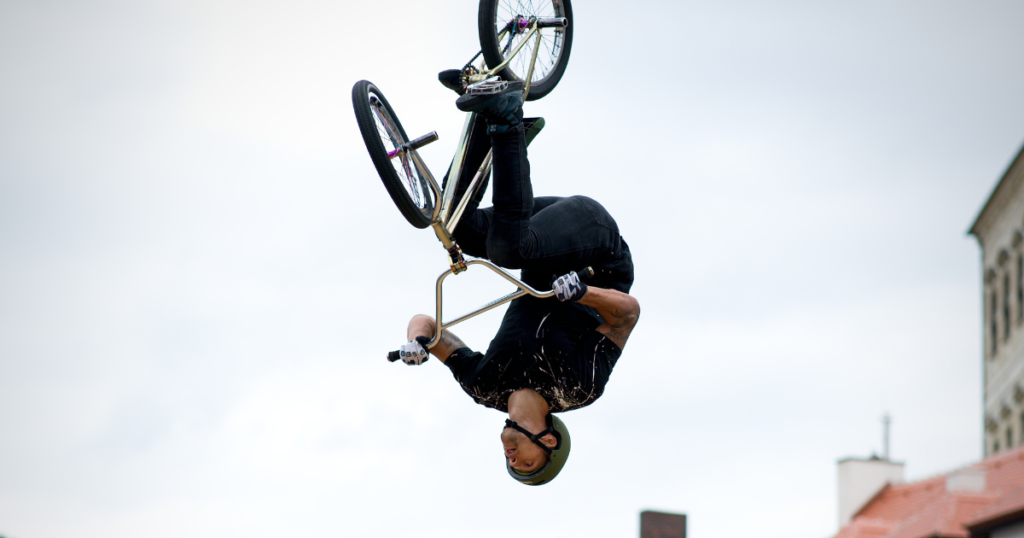
FAQs
1. How long do BMX bars typically last?
The lifespan of BMX bars can vary depending on factors such as riding style, frequency of use, and bar quality. With proper maintenance and a high-quality bar, you can expect them to last for years and provide you with many enjoyable riding sessions.
2. Does the material of the bar affect its lifespan?
Yes, definitely! The durability of a BMX bar heavily depends on the material used in its construction. Bars made from high-quality materials, like multi-butted 41-thermal heat-treated chromoly, are known to be more resilient and long-lasting compared to those made from lower quality materials such as hi-ten steel. Additionally, choosing a bar that has gone through post-weld heat-treatment and features thinner tubing can further enhance its longevity.
3. Are there any specific brands known for producing durable BMX bars?
Yes, there are reputable brands in the market that are known for manufacturing durable BMX bars. For example, Odyssey’s Lumberjack XL Bar and Shadow Conspiracy’s Crow Bar are highly regarded for their longevity and performance. These brands have earned the trust of riders worldwide through their commitment to quality.
4. Can the design of the BMX bar affect its lifespan?
The design and geometry of a BMX bar can indeed affect its durability. Riders of smaller stature often prefer bars with a lower crossbar, while those who are larger may choose bars with more rise. Furthermore, bars with a negative sweep or an additional tube for increased strength are better equipped to withstand rough treatment and have a longer lifespan.
5. How can I ensure the longevity of my BMX bar?
To ensure that your BMX bar lasts as long as possible, it’s important to take good care of it. Regularly check for any signs of damage like cracks or bends. Keep it clean by removing dirt and grime, as these can cause corrosion over time. Ride within your skill level and avoid harsh impacts to reduce stress on the bar. By following these maintenance tips, you can maximize the lifespan of your BMX bar.
6. How long do BMX bars typically last?
The lifespan of BMX bars can vary based on factors like the materials used, riding style, and maintenance. Generally, high-quality BMX bars can last for approximately one to three years with regular use.
7. Are all materials suitable for making durable BMX bars?
Are all materials equally durable for extreme sports like BMX riding? No, they are not. Different materials, such as steel or aluminum alloy, have varying benefits in terms of weight and strength. It is crucial to choose high-quality materials that are specifically designed for durability in activities like BMX riding.
8: Can I recycle old or damaged BMX Bars?
Absolutely! Most recycling centers accept metal items, such as old bike parts like handlebars. To ensure proper disposal of your old BMX accessories, it is recommended to check with your local recycling facility for specific guidelines.
Conclusion
The lifespan of a BMX bar can differ based on various factors, such as the material used, frequency of use, and level of maintenance. By considering these factors, you can assess the durability of your BMX bar and determine when it may require replacement.
When it comes to durability, different materials have varying levels of strength. Chromoly steel bars, for example, are highly acclaimed for their exceptional strength and long lifespan. They are a preferred choice among riders who prioritize durability. On the other hand, while aluminum bars offer a lighter alternative, they may not possess the same level of strength or longevity as chromoly steel bars.
The lifespan of your BMX bar can also be influenced by factors such as your riding style and frequency. If you ride aggressively or frequently perform jumps and tricks, the bar will experience more stress, which increases the chances of wear and tear over time.
To determine if your BMX bar needs replacing, there are several signs to look for. First, check for any visible cracks or dents in the metal. These can weaken the structure and compromise safety. Additionally, pay attention to how the bar feels during use. If it excessively flexes or feels loose when gripping the handlebars, it may be time for a replacement.
When it’s time to get rid of your old BMX bars because they’re no longer usable or have been severely damaged, be sure to follow your local recycling guidelines. This way, you can avoid unnecessarily sending them to a landfill.



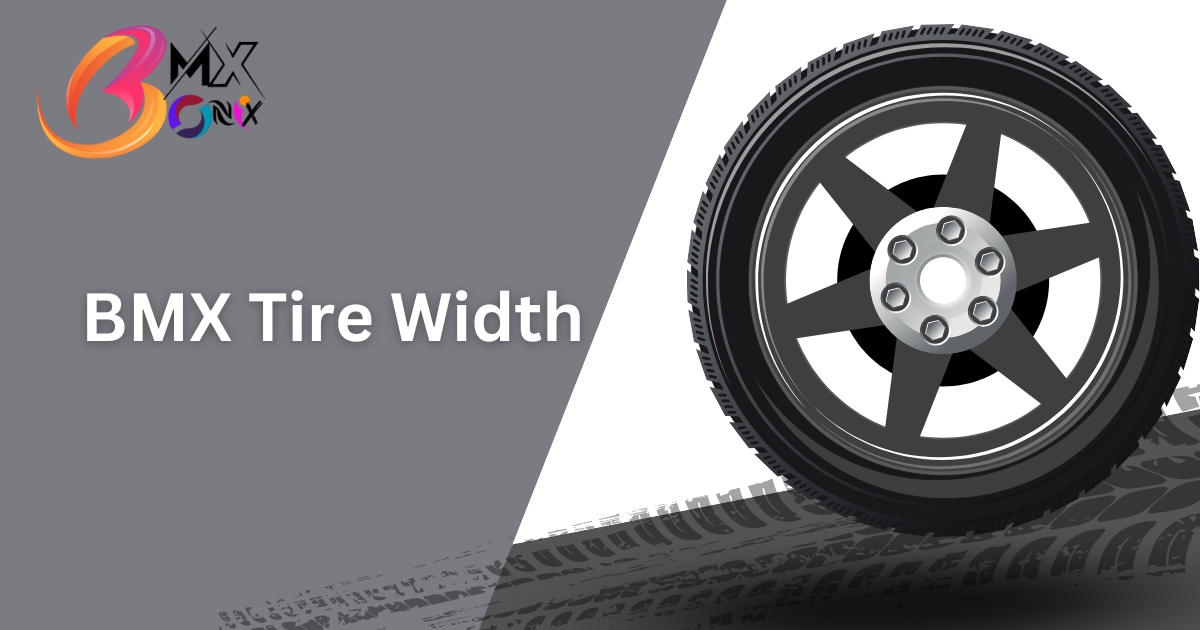
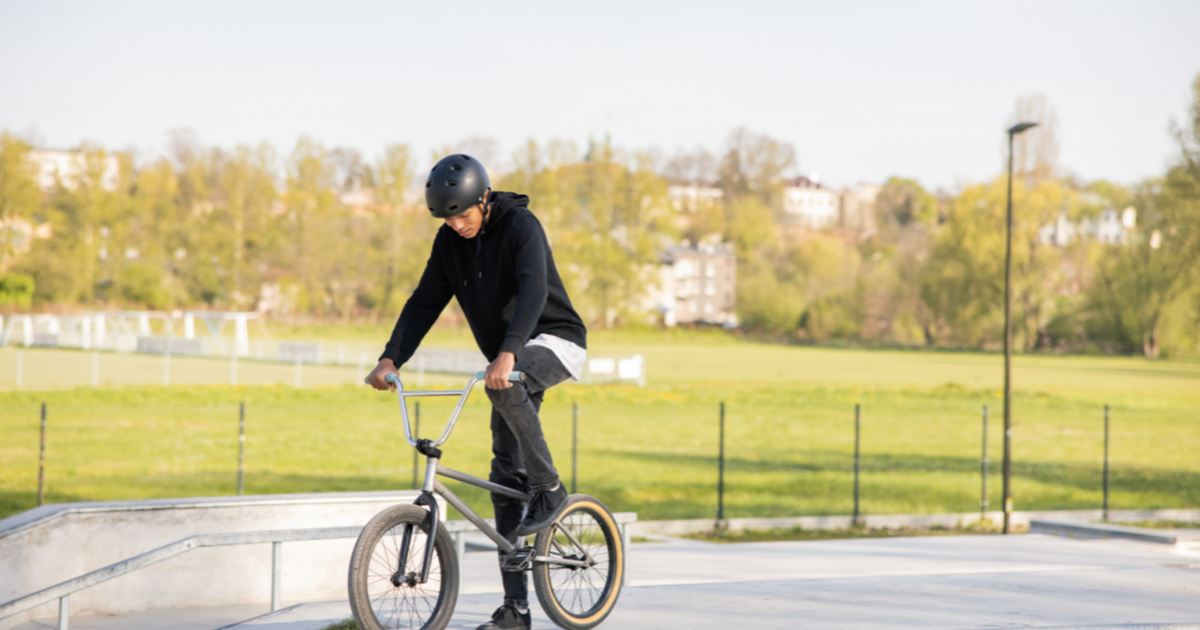
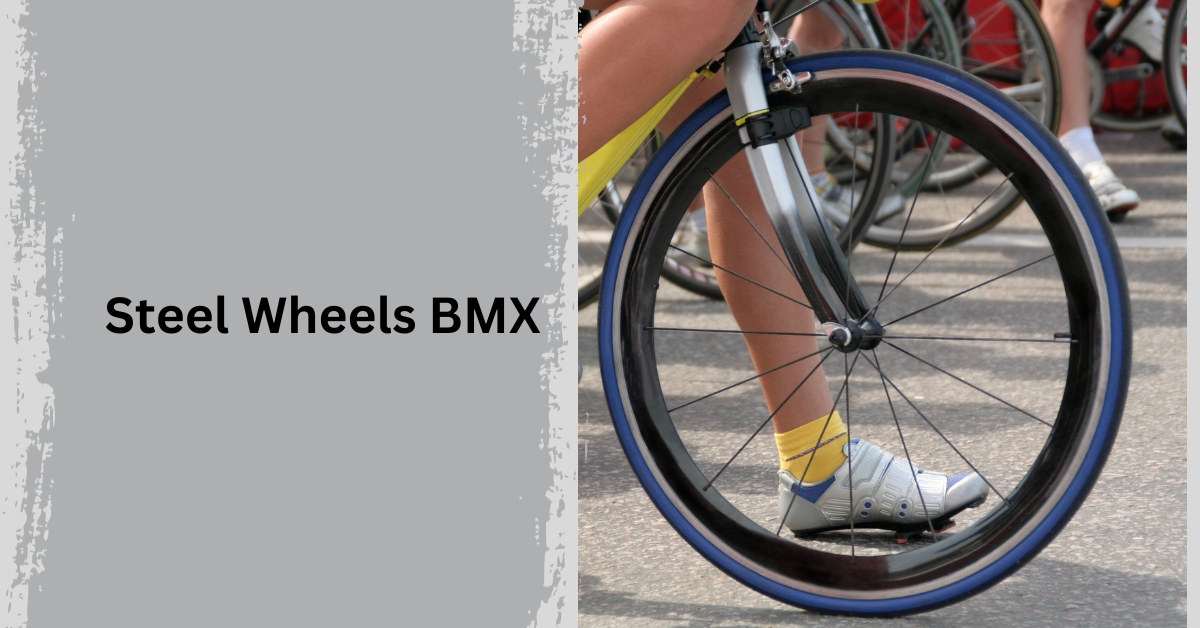
4 thoughts on “How Long A BMX Bar Lasts?”